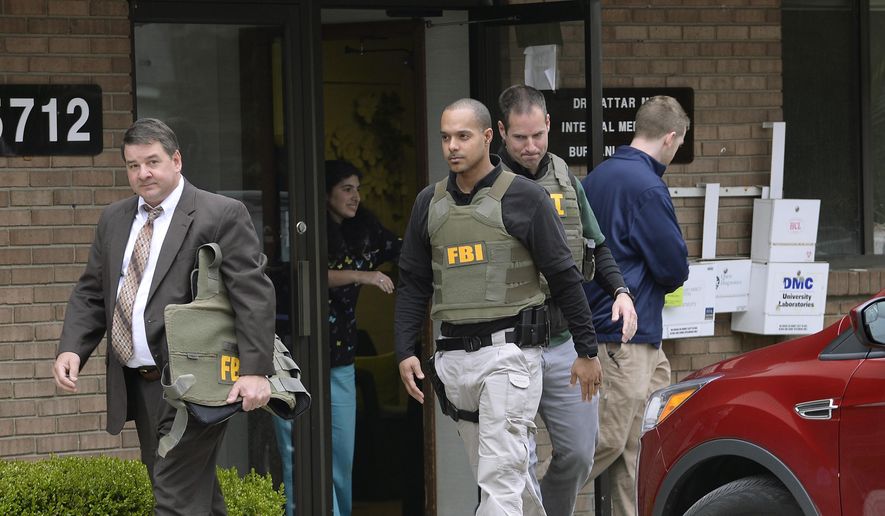ST. PAUL, Minn. (AP) — Minnesota lawmakers sat in stunned silence Wednesday as a Somali-American woman described how she was grabbed while sleeping by her mother and relatives, blindfolded and tied down to have her genitals cut as a young girl. She still remembers the pain, the blood and a woman holding the piece of her flesh above her.
Farhio Khalif’s story put a name and face to the little-known cultural ritual now in the national spotlight after a Detroit-area doctor was charged with genital mutilation for allegedly performing the procedure on two 7-year-old girls from Minnesota.
A federal judge on Wednesday denied bond for two other people charged in the case: a doctor who owns the clinic where the procedures allegedly took place and his wife, who prosecutors believe may have helped hold down the children. A prosecutor alleged during the hearing that Dr. Jumana Nagarwala, who is accused of performing the procedures, may have done it to “countless” others since 2005.
State lawmakers across the country are responding to the case: The Minnesota House panel that heard Khalif’s story unanimously passed a bill that would make parental involvement in a girl’s genital mutilation a felony and grounds to lose custody rights.
Similar legislation is in the works in Texas. Michigan’s Legislature is considering even harsher penalties than the federal ones for physicians who perform the procedure.
The charges against Nagarwala — and the Detroit-area clinic’s owner and his wife — are believed to be the first case testing the U.S. ban on the practice of female circumcision, which is also known as female genital mutilation or cutting. Nagarwala’s attorney has said she was merely performing a harmless religious ritual when the girls were brought to the clinic in February.
The procedure has roots in various cultures in Asia, Africa and the Middle East. It’s generally performed as a way of controlling a girl’s sexuality, maintaining her purity or even making her more fertile as she grows into adulthood.
But it’s difficult to gauge how often genital cutting occurs in the U.S. - a 2012 study from the Centers of Disease Control and Prevention estimated that more than 513,000 girls in the country had been subjected to or were at risk of undergoing genital cutting.
Khalif, who grew up in Somalia, said she was just 7 or 8 years old when her brothers came to get her for the ritual. She said she ran from and climbed a tree, where spent hours waiting her family out. But her mother and other relatives grabbed her while she slept the next morning.
“She said, ’Now you see. Now you don’t have it anymore,’ ” Khalif said of the woman who made the cut. “We don’t talk about this in our communities. It is hush-hush, in our living rooms.”
State Rep. Mary Franson, R-Alexandria, said her bill would treat parents just as any other type of child abuser. She and other lawmakers were outraged that at least one of the Minnesota girls was returned to her parents; court records for the other girl are sealed.
“If a child was being abused in any other way, would we be OK with putting them back in that setting? I think the answer is no” said state Rep. Peggy Scott, an Andover Republican.
The nation’s first Somali-American lawmaker, state Rep. Ilhan Omar, agreed that the practice is “heinous” but worried that removing children from their homes would do nothing to reverse the harm of the procedure. She and several other Democrats suggested that current laws on the books that help punish accomplices to crimes could be used to punish parents.
“I don’t want us to create laws because there is a flashy headline,” Omar said. “I want to make sure we are doing this for the right reasons.”
___
Associated Press writer Ed White in Detroit contributed to this report.




Please read our comment policy before commenting.